Hongwei Zhang
Co-Sight: Enhancing LLM-Based Agents via Conflict-Aware Meta-Verification and Trustworthy Reasoning with Structured Facts
Oct 24, 2025Abstract:Long-horizon reasoning in LLM-based agents often fails not from generative weakness but from insufficient verification of intermediate reasoning. Co-Sight addresses this challenge by turning reasoning into a falsifiable and auditable process through two complementary mechanisms: Conflict-Aware Meta-Verification (CAMV) and Trustworthy Reasoning with Structured Facts (TRSF). CAMV reformulates verification as conflict identification and targeted falsification, allocating computation only to disagreement hotspots among expert agents rather than to full reasoning chains. This bounds verification cost to the number of inconsistencies and improves efficiency and reliability. TRSF continuously organizes, validates, and synchronizes evidence across agents through a structured facts module. By maintaining verified, traceable, and auditable knowledge, it ensures that all reasoning is grounded in consistent, source-verified information and supports transparent verification throughout the reasoning process. Together, TRSF and CAMV form a closed verification loop, where TRSF supplies structured facts and CAMV selectively falsifies or reinforces them, yielding transparent and trustworthy reasoning. Empirically, Co-Sight achieves state-of-the-art accuracy on GAIA (84.4%) and Humanity's Last Exam (35.5%), and strong results on Chinese-SimpleQA (93.8%). Ablation studies confirm that the synergy between structured factual grounding and conflict-aware verification drives these improvements. Co-Sight thus offers a scalable paradigm for reliable long-horizon reasoning in LLM-based agents. Code is available at https://github.com/ZTE-AICloud/Co-Sight/tree/cosight2.0_benchmarks.
Prompt-based Multimodal Semantic Communication for Multi-spectral Image Segmentation
Aug 25, 2025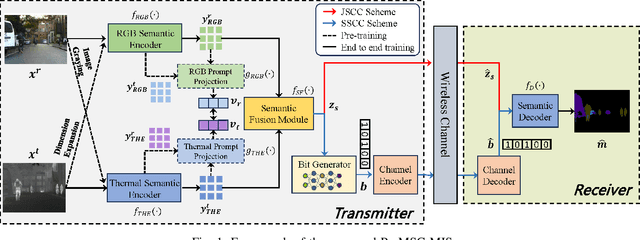
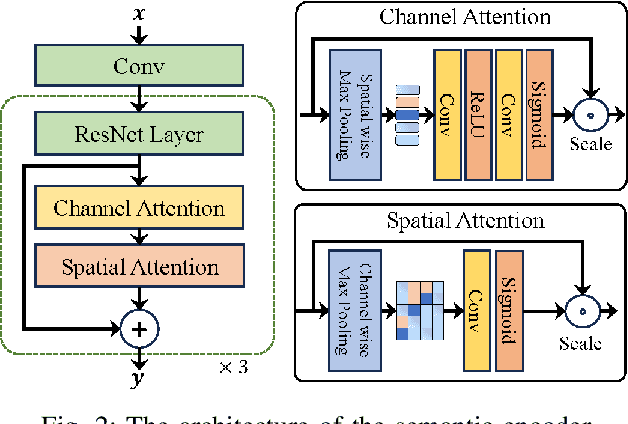
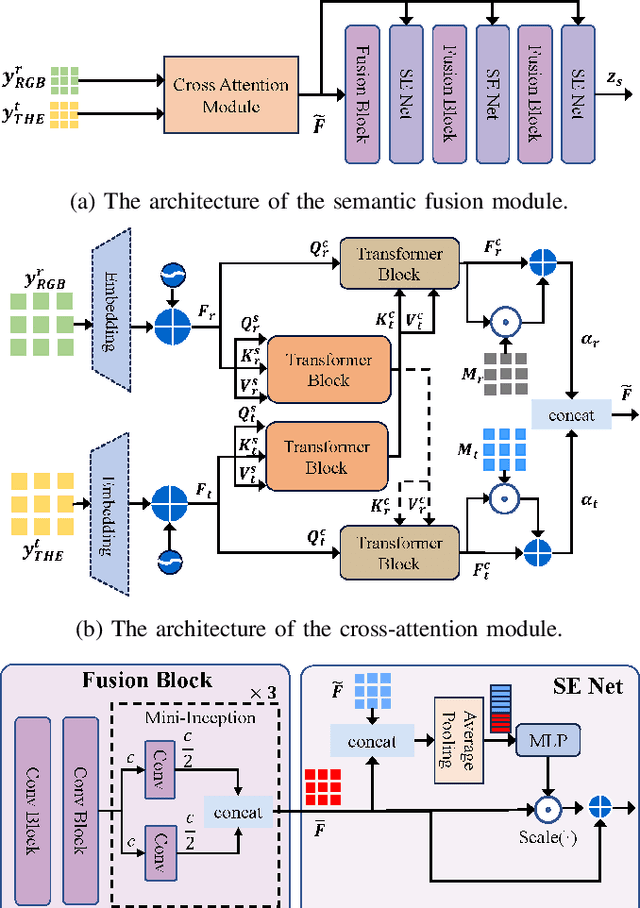

Abstract:Multimodal semantic communication has gained widespread attention due to its ability to enhance downstream task performance. A key challenge in such systems is the effective fusion of features from different modalities, which requires the extraction of rich and diverse semantic representations from each modality. To this end, we propose ProMSC-MIS, a Prompt-based Multimodal Semantic Communication system for Multi-spectral Image Segmentation. Specifically, we propose a pre-training algorithm where features from one modality serve as prompts for another, guiding unimodal semantic encoders to learn diverse and complementary semantic representations. We further introduce a semantic fusion module that combines cross-attention mechanisms and squeeze-and-excitation (SE) networks to effectively fuse cross-modal features. Simulation results show that ProMSC-MIS significantly outperforms benchmark methods across various channel-source compression levels, while maintaining low computational complexity and storage overhead. Our scheme has great potential for applications such as autonomous driving and nighttime surveillance.
PET2Rep: Towards Vision-Language Model-Drived Automated Radiology Report Generation for Positron Emission Tomography
Aug 06, 2025Abstract:Positron emission tomography (PET) is a cornerstone of modern oncologic and neurologic imaging, distinguished by its unique ability to illuminate dynamic metabolic processes that transcend the anatomical focus of traditional imaging technologies. Radiology reports are essential for clinical decision making, yet their manual creation is labor-intensive and time-consuming. Recent advancements of vision-language models (VLMs) have shown strong potential in medical applications, presenting a promising avenue for automating report generation. However, existing applications of VLMs in the medical domain have predominantly focused on structural imaging modalities, while the unique characteristics of molecular PET imaging have largely been overlooked. To bridge the gap, we introduce PET2Rep, a large-scale comprehensive benchmark for evaluation of general and medical VLMs for radiology report generation for PET images. PET2Rep stands out as the first dedicated dataset for PET report generation with metabolic information, uniquely capturing whole-body image-report pairs that cover dozens of organs to fill the critical gap in existing benchmarks and mirror real-world clinical comprehensiveness. In addition to widely recognized natural language generation metrics, we introduce a series of clinical efficiency metrics to evaluate the quality of radiotracer uptake pattern description in key organs in generated reports. We conduct a head-to-head comparison of 30 cutting-edge general-purpose and medical-specialized VLMs. The results show that the current state-of-the-art VLMs perform poorly on PET report generation task, falling considerably short of fulfilling practical needs. Moreover, we identify several key insufficiency that need to be addressed to advance the development in medical applications.
Efficient Network Automatic Relevance Determination
Jun 14, 2025



Abstract:We propose Network Automatic Relevance Determination (NARD), an extension of ARD for linearly probabilistic models, to simultaneously model sparse relationships between inputs $X \in \mathbb R^{d \times N}$ and outputs $Y \in \mathbb R^{m \times N}$, while capturing the correlation structure among the $Y$. NARD employs a matrix normal prior which contains a sparsity-inducing parameter to identify and discard irrelevant features, thereby promoting sparsity in the model. Algorithmically, it iteratively updates both the precision matrix and the relationship between $Y$ and the refined inputs. To mitigate the computational inefficiencies of the $\mathcal O(m^3 + d^3)$ cost per iteration, we introduce Sequential NARD, which evaluates features sequentially, and a Surrogate Function Method, leveraging an efficient approximation of the marginal likelihood and simplifying the calculation of determinant and inverse of an intermediate matrix. Combining the Sequential update with the Surrogate Function method further reduces computational costs. The computational complexity per iteration for these three methods is reduced to $\mathcal O(m^3+p^3)$, $\mathcal O(m^3 + d^2)$, $\mathcal O(m^3+p^2)$, respectively, where $p \ll d$ is the final number of features in the model. Our methods demonstrate significant improvements in computational efficiency with comparable performance on both synthetic and real-world datasets.
Fast on the Easy, Deep on the Hard: Efficient Reasoning via Powered Length Penalty
Jun 12, 2025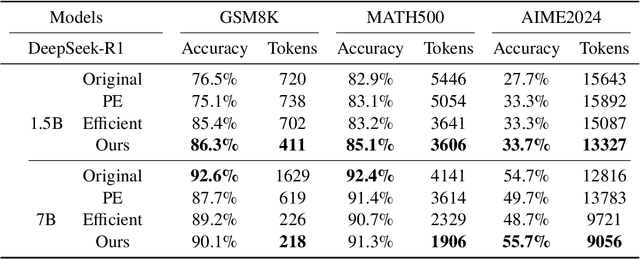



Abstract:Large language models (LLMs) have demonstrated significant advancements in reasoning capabilities, performing well on various challenging benchmarks. Techniques like Chain-of-Thought prompting have been introduced to further improve reasoning. However, these approaches frequently generate longer outputs, which in turn increase computational latency. Although some methods use reinforcement learning to shorten reasoning, they often apply uniform penalties without considering the problem's complexity, leading to suboptimal outcomes. In this study, we seek to enhance the efficiency of LLM reasoning by promoting conciseness for simpler problems while preserving sufficient reasoning for more complex ones for accuracy, thus improving the model's overall performance. Specifically, we manage the model's reasoning efficiency by dividing the reward function and including a novel penalty for output length. Our approach has yielded impressive outcomes in benchmark evaluations across three datasets: GSM8K, MATH500, and AIME2024. For the comparatively simpler datasets GSM8K and MATH500, our method has effectively shortened output lengths while preserving or enhancing accuracy. On the more demanding AIME2024 dataset, our approach has resulted in improved accuracy.
ChromFound: Towards A Universal Foundation Model for Single-Cell Chromatin Accessibility Data
May 19, 2025Abstract:The advent of single-cell Assay for Transposase-Accessible Chromatin using sequencing (scATAC-seq) offers an innovative perspective for deciphering regulatory mechanisms by assembling a vast repository of single-cell chromatin accessibility data. While foundation models have achieved significant success in single-cell transcriptomics, there is currently no foundation model for scATAC-seq that supports zero-shot high-quality cell identification and comprehensive multi-omics analysis simultaneously. Key challenges lie in the high dimensionality and sparsity of scATAC-seq data, as well as the lack of a standardized schema for representing open chromatin regions (OCRs). Here, we present \textbf{ChromFound}, a foundation model tailored for scATAC-seq. ChromFound utilizes a hybrid architecture and genome-aware tokenization to effectively capture genome-wide long contexts and regulatory signals from dynamic chromatin landscapes. Pretrained on 1.97 million cells from 30 tissues and 6 disease conditions, ChromFound demonstrates broad applicability across 6 diverse tasks. Notably, it achieves robust zero-shot performance in generating universal cell representations and exhibits excellent transferability in cell type annotation and cross-omics prediction. By uncovering enhancer-gene links undetected by existing computational methods, ChromFound offers a promising framework for understanding disease risk variants in the noncoding genome.
An Integrated AI-Enabled System Using One Class Twin Cross Learning (OCT-X) for Early Gastric Cancer Detection
Mar 31, 2025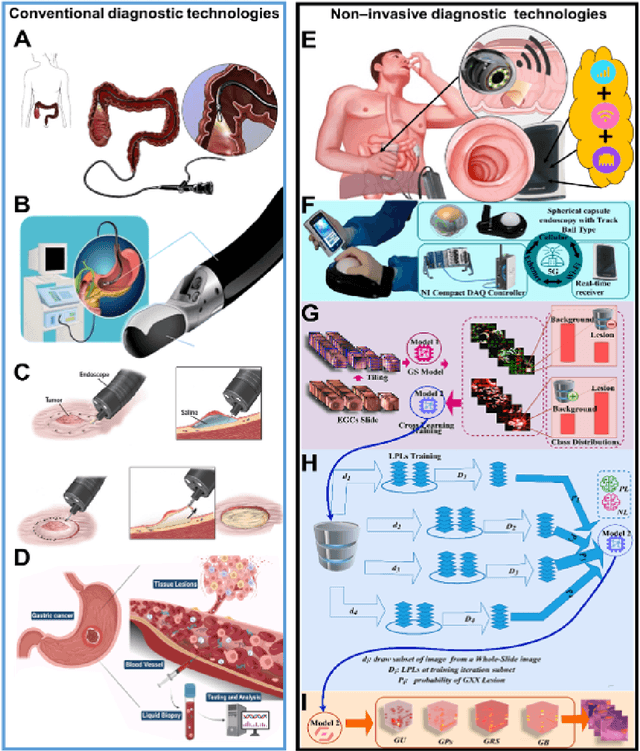
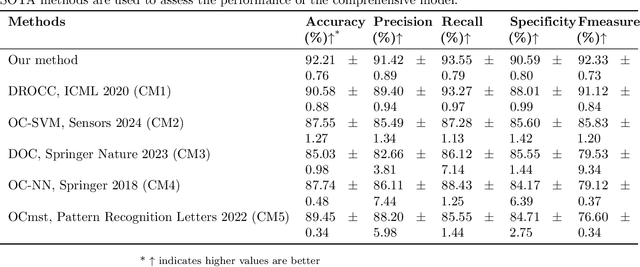
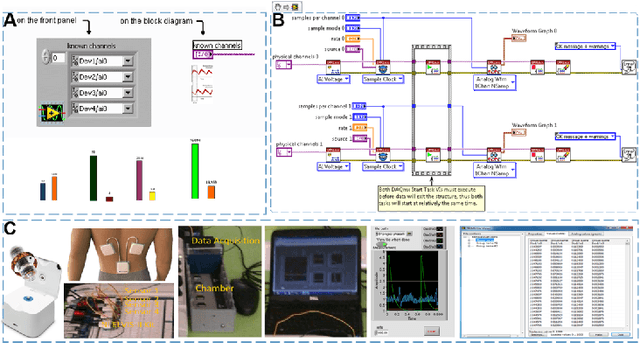
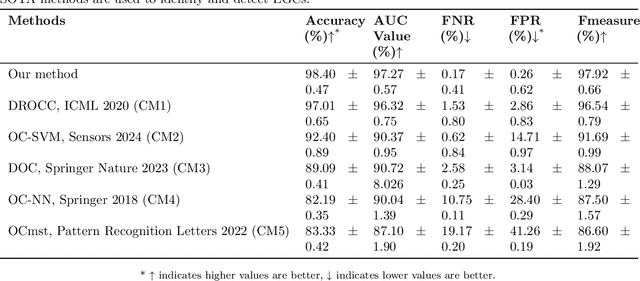
Abstract:Early detection of gastric cancer, a leading cause of cancer-related mortality worldwide, remains hampered by the limitations of current diagnostic technologies, leading to high rates of misdiagnosis and missed diagnoses. To address these challenges, we propose an integrated system that synergizes advanced hardware and software technologies to balance speed-accuracy. Our study introduces the One Class Twin Cross Learning (OCT-X) algorithm. Leveraging a novel fast double-threshold grid search strategy (FDT-GS) and a patch-based deep fully convolutional network, OCT-X maximizes diagnostic accuracy through real-time data processing and seamless lesion surveillance. The hardware component includes an all-in-one point-of-care testing (POCT) device with high-resolution imaging sensors, real-time data processing, and wireless connectivity, facilitated by the NI CompactDAQ and LabVIEW software. Our integrated system achieved an unprecedented diagnostic accuracy of 99.70%, significantly outperforming existing models by up to 4.47%, and demonstrated a 10% improvement in multirate adaptability. These findings underscore the potential of OCT-X as well as the integrated system in clinical diagnostics, offering a path toward more accurate, efficient, and less invasive early gastric cancer detection. Future research will explore broader applications, further advancing oncological diagnostics. Code is available at https://github.com/liu37972/Multirate-Location-on-OCT-X-Learning.git.
ReVeal: A Physics-Informed Neural Network for High-Fidelity Radio Environment Mapping
Feb 27, 2025Abstract:Accurately mapping the radio environment (e.g., identifying wireless signal strength at specific frequency bands and geographic locations) is crucial for efficient spectrum sharing, enabling secondary users (SUs) to access underutilized spectrum bands while protecting primary users (PUs). However, current models are either not generalizable due to shadowing, interference, and fading or are computationally too expensive, limiting real-world applicability. To address the shortcomings of existing models, we derive a second-order partial differential equation (PDE) for the Received Signal Strength Indicator (RSSI) based on a statistical model used in the literature. We then propose ReVeal (Re-constructor and Visualizer of Spectrum Landscape), a novel Physics-Informed Neural Network (PINN) that integrates the PDE residual into a neural network loss function to accurately model the radio environment based on sparse RF sensor measurements. ReVeal is validated using real-world measurement data from the rural and suburban areas of the ARA testbed and benchmarked against existing methods.ReVeal outperforms the existing methods in predicting the radio environment; for instance, with a root mean square error (RMSE) of only 1.95 dB, ReVeal achieves an accuracy that is an order of magnitude higher than existing methods such as the 3GPP and ITU-R channel models, ray-tracing, and neural networks. ReVeal achieves both high accuracy and low computational complexity while only requiring sparse RF sampling, for instance, only requiring 30 training sample points across an area of 514 square kilometers.
CoKV: Optimizing KV Cache Allocation via Cooperative Game
Feb 21, 2025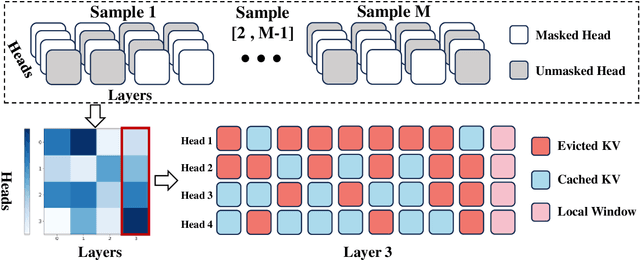
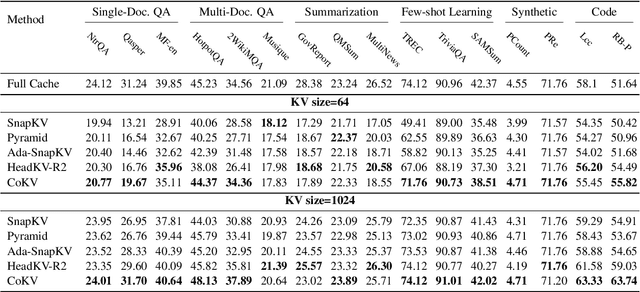
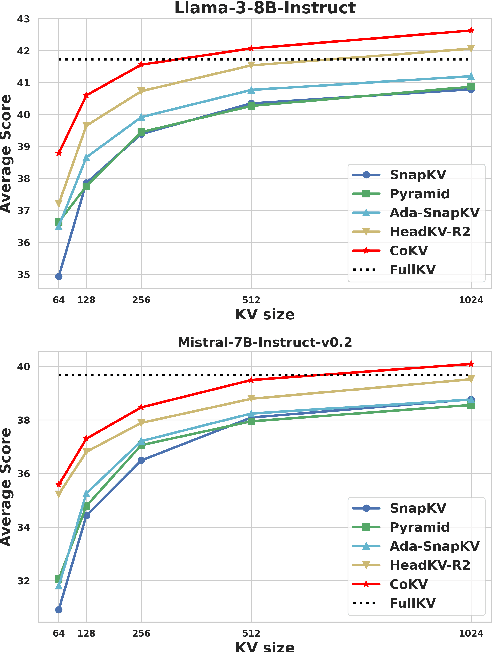

Abstract:Large language models (LLMs) have achieved remarkable success on various aspects of human life. However, one of the major challenges in deploying these models is the substantial memory consumption required to store key-value pairs (KV), which imposes significant resource demands. Recent research has focused on KV cache budget allocation, with several approaches proposing head-level budget distribution by evaluating the importance of individual attention heads. These methods, however, assess the importance of heads independently, overlooking their cooperative contributions within the model, which may result in a deviation from their true impact on model performance. In light of this limitation, we propose CoKV, a novel method that models the cooperation between heads in model inference as a cooperative game. By evaluating the contribution of each head within the cooperative game, CoKV can allocate the cache budget more effectively. Extensive experiments show that CoKV achieves state-of-the-art performance on the LongBench benchmark using LLama-3-8B-Instruct and Mistral-7B models.
Learning-Enhanced Safeguard Control for High-Relative-Degree Systems: Robust Optimization under Disturbances and Faults
Jan 26, 2025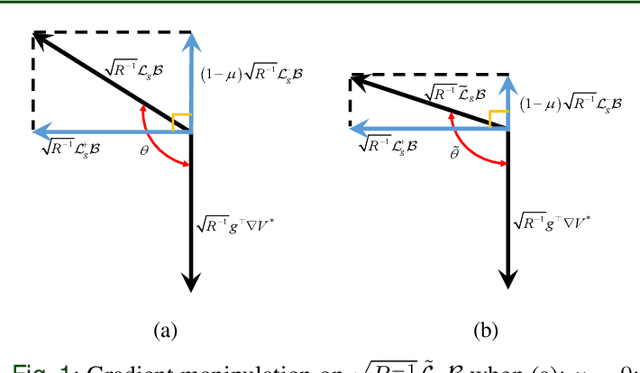
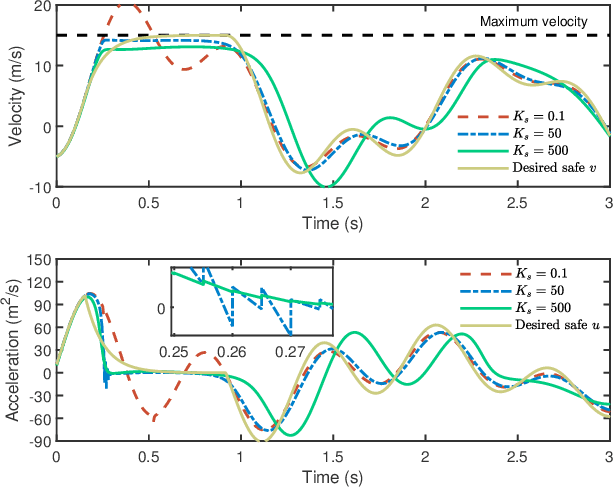
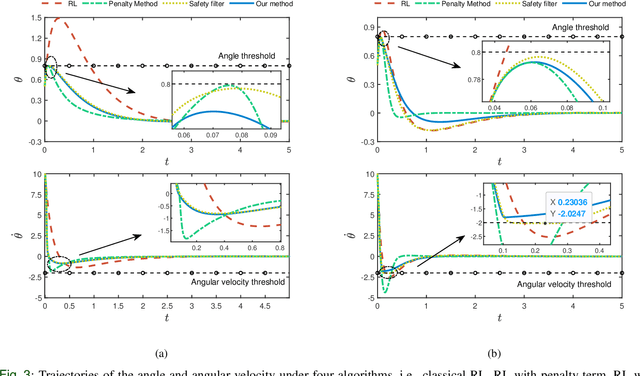
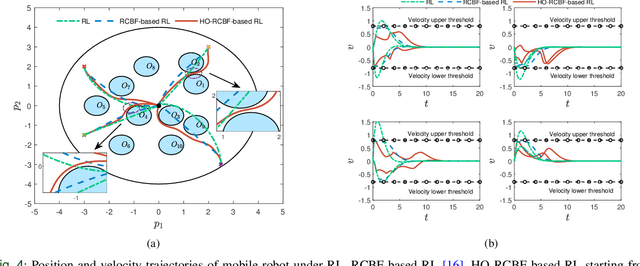
Abstract:Merely pursuing performance may adversely affect the safety, while a conservative policy for safe exploration will degrade the performance. How to balance the safety and performance in learning-based control problems is an interesting yet challenging issue. This paper aims to enhance system performance with safety guarantee in solving the reinforcement learning (RL)-based optimal control problems of nonlinear systems subject to high-relative-degree state constraints and unknown time-varying disturbance/actuator faults. First, to combine control barrier functions (CBFs) with RL, a new type of CBFs, termed high-order reciprocal control barrier function (HO-RCBF) is proposed to deal with high-relative-degree constraints during the learning process. Then, the concept of gradient similarity is proposed to quantify the relationship between the gradient of safety and the gradient of performance. Finally, gradient manipulation and adaptive mechanisms are introduced in the safe RL framework to enhance the performance with a safety guarantee. Two simulation examples illustrate that the proposed safe RL framework can address high-relative-degree constraint, enhance safety robustness and improve system performance.
 Add to Chrome
Add to Chrome Add to Firefox
Add to Firefox Add to Edge
Add to Edge